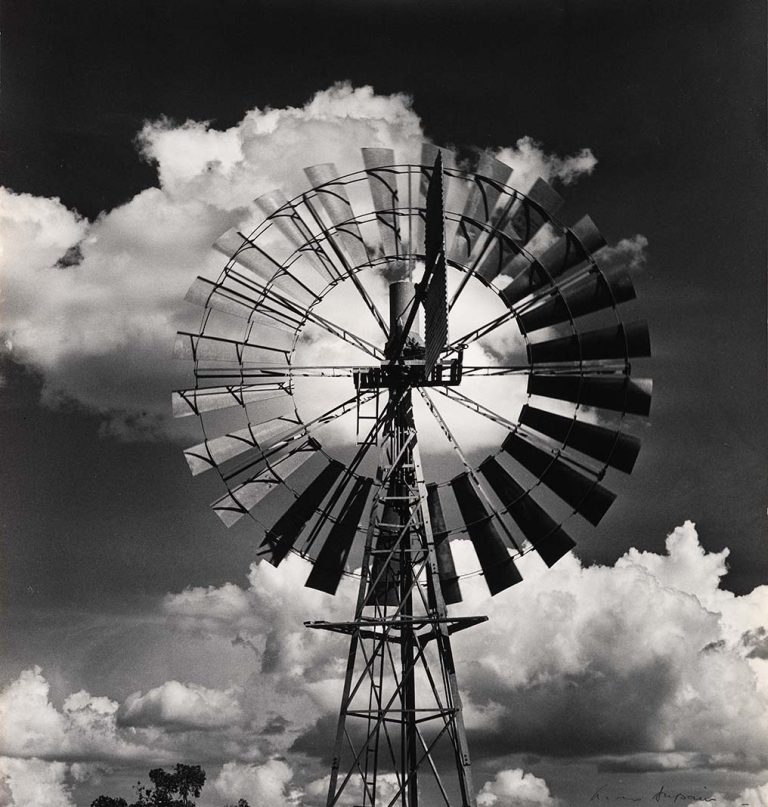We acknowledge the Traditional Owners of the land on which the Queensland Art Gallery | Gallery of Modern Art stands and recognise the creative contribution First Australians make to the art and culture of this country.

Max Dupain / Australia 1911–92 / Windmill at ‘Eurella’, Queensland 1978, printed 1987 / Gelatin silver photograph on paper / 42.3 x 40.2cm / Gift of CSR Limited through the Queensland Art Gallery Foundation 1987 / Collection: QAGOMA / © Estate of Max Dupain/Licenced by Copyright Agency, 2022
Max DupainWindmill at ‘Eurella’, Queensland 1978
Not Currently on Display
CSR Limited, Australia’s major sugar refinery, initiated the CSR Photography Project in 1978 to commemorate their hundredth anniversary. Six photographers recorded different aspects of the refinery’s activities and the lives of employees.
Max Dupain photographed cane growers and their families in Queensland, producing images which linked ‘an almost nineteenth century vision of pastoral harmony with the modern Australian nuclear family’.1 These images document the landscape in Queensland’s cane growing regions, industrial sites, family and working life.
Dupain also made two trips in 1977 and 1978 to properties owned by Australian Estates, a large agricultural company acquired by CSR Limited in the mid-1970s. This image was taken at ‘Eurella’ a sheep station just outside of Roma in central Queensland.
Endnotes:
1 Martyn Jolly in Christine Godden. ‘CSR photography project: Selected Works’. CSR Limited, Sydney 1985, unpaginated.
Max Dupain was born in Sydney in 1911. He became interested in photography around the age of 14, and after leaving Sydney Grammar School in 1930, he began a three-year apprenticeship in Cecil Bostock’s photography studio. He also began exhibiting around this time. During the 1930s, Dupain pioneered modern photography in Australia.
By 1938, he had a reputation as a leading commercial photographer in the fields of fashion, advertising and portraiture. Between 1943 and 1944, Dupain was a war photographer, before transferring to the Department of Information, where he undertook a promotional photography assignment focusing on Australia’s postwar recovery, including the experience of immigration.
Max Dupain enjoys an unrivalled position in the history of Australian photography, with his name inextricably linked to images signifying the Australian ethos.